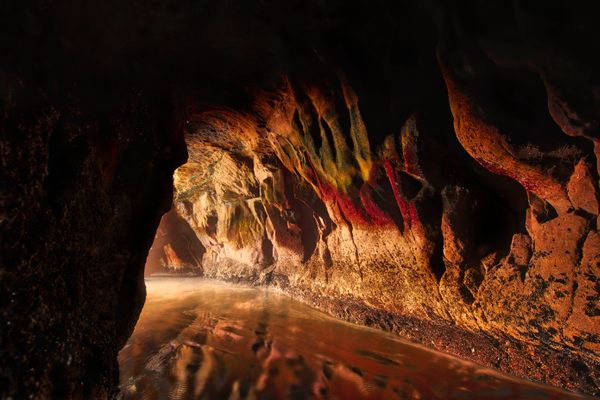The Bat-Loving Naturalists Translating the Silent Language of the Night
Listen in as they swat away mosquitoes and brave a dark forest to eavesdrop on echolocation.

We crunched into the woods just after sunset on an early-August evening. The sky was still sherbet-orange over Rondeau Provincial Park, a swath of Carolinian forest near the shore of Lake Erie in Ontario, Canada. Soon after, everything was washed the color of charcoal. It was the prime hour for mosquito bites—and for bat-spotting.
Catching a glimpse of a darting bat is no easy feat, even though the 12.5-square-mile park is home to six species of them. The little brown bat and the hoary bat—Canada’s largest—among others, are speedy, silent, and easy to miss, even when they fly right overhead. This is partly because the sounds they make to echolocate—to find prey and dodge trees—are at a frequency that’s beyond us. Across species, echolocation clicks can vary from roughly 20 to 200 kilohertz (kHz); adult humans generally cannot hear anything above the bottom of this range.
So, to find bats, we had to decipher their code. I tagged along with Laura Penner and Olivia Pomajba, two naturalists wielding a kind of universal translator for bats. The device picked up and recorded the frequencies bats use to echolocate, and then converted them into sounds that we can wrap our ears around.
Listen to our trip into the bats’ domain above.





















Follow us on Twitter to get the latest on the world's hidden wonders.
Like us on Facebook to get the latest on the world's hidden wonders.
Follow us on Twitter Like us on Facebook